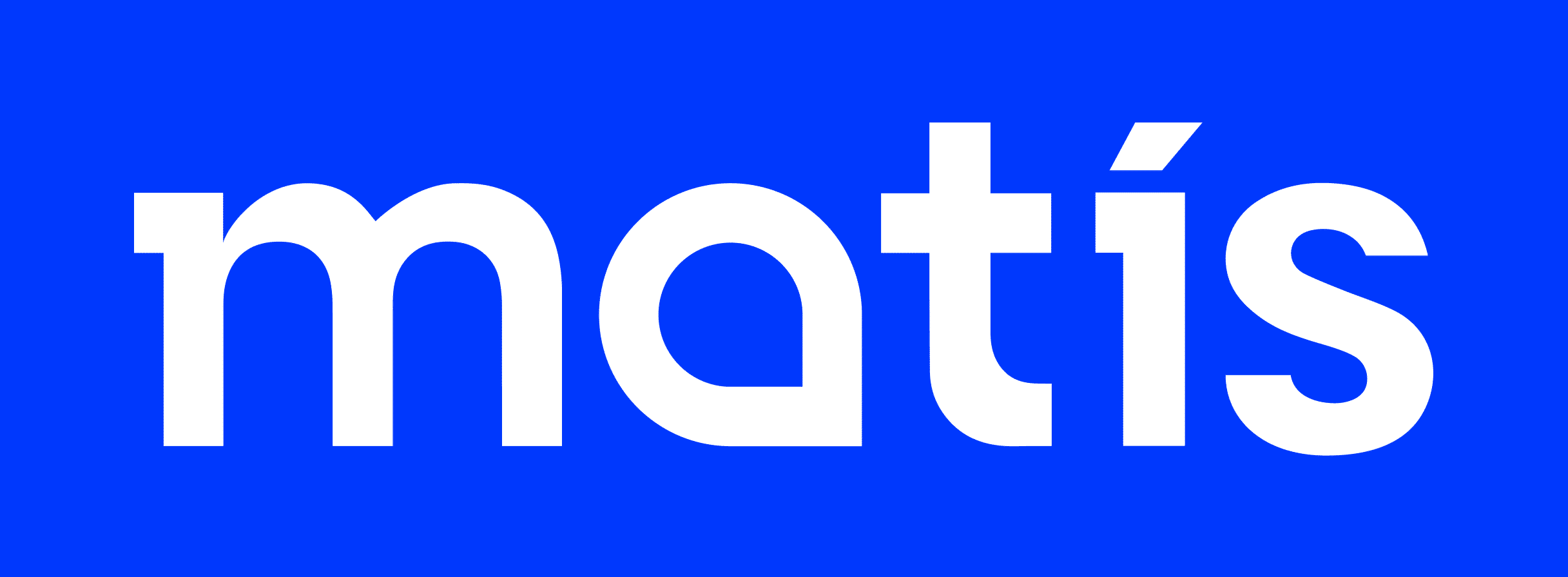The Nordic countries are major players in fish farming, including salmon (Salmo salar). Many demanding environmental issues are related to this production and they are found in every step of the process. The main focus of this report has been on new feed ingredients and improved utilization of by-products. Both of these issues concern a large amount and it is of great importance for the business world as well as the sustainability and environmental impact of this important profession that they are handled in a better and more efficient way than the current methods. Future food security for our planet's population, in a sustainable manner in the long term, requires a revolution in the way we produce our food. There is an urgent need to maximize sustainable feed production.
_____
The Nordic countries are big players in salmon aquaculture (Salmo salar). Many challenging environmental issues are related to this production, and they are to be found in every step of the process. The main focus in this report has been put on novel and alternative feed ingredients and sidestreams utilization. Both those issues involve vast volumes and it's of high importance for the economy as well as the sustainability and environmental impact of this important profession that they are tackled in a better and more efficient manner than current approaches. Future food security for our global population that does not compromise the long-term sustainability of our ecosystems requires a revolution in the way we produce our food and there is an urgent need to nutritionally optimize a sustainably produced feed ingredient for inclusion in aquafeeds.
Tag: By-products
In the project, an assessment was made of the ratio of meat, fat and bones in lamb meat. Carcasses from the meat evaluation categories O-2, R-2, R-3, U-2, U-3, U-3+, and E-3 were selected for the evaluation, nine carcasses from each evaluation category, a total of 63 carcasses. Carcasses from these categories cover the 92% production based on the division into meat food categories in 2021. Carcasses were selected on three different slaughter days, in two slaughterhouses, in the north and the south, in such a way that the head of the meat evaluation department at the Food Agency, selected all carcasses and confirmed that each a carcass would be a traditional carcass in its assessment category and not at the edge of the category. The day after slaughter, the carcasses were split in half. One half was divided into thighs, forequarters, loins and loins according to the traditional division, while the other half was divided into three weight categories, lightweight under 14.5 kg, medium 14.5 - 16.8 kg and heavy 16.9 - 19.0 kg. The halves were then divided in different ways, with parts going into the various products. Precision deboning was applied to both halves of the lamb carcasses to find the division of the various cuts and products into meat, fat, bone and sinew. Atrophy was also found due to loss of ossification.
Meat utilization (meat ratio) for the lamb carcasses as a whole was 59.0 (50.7-67.3)%, fat ratio was 16.2 (9.7-28.0)%, bone ratio was 17.7 (13.4- 22.1)% and the tendon ratio was 6.3 (4.4-8.1)%. Atrophy during precision boning was 1.1 (0.0-2.5)%. The average meat utilization was highest in the evaluation category U-2, except for the front part, where the utilization was somewhat higher in E-3. Within the flesh filling categories U and R, it was clearly seen how the percentage of fat changes according to the definitions of fat categories.
The proportion of meat, fat and bones in different quality categories confirms that the meat assessment is realistic and in accordance with the definitions behind the assessment.
The proportions of meat, fat, bones, tendons and shrinkage were found for 30 lamb products from selected weight classes. High meat percentage was obtained for thigh without rump, hip bone and tail bone from heavy carcasses (74%) and thigh with shank without hip from both light and medium carcasses (69%).
Measurements were made of nutrients in lamb pieces and lamb products. Heavy metal measurements were made on lamb pieces. These results will be useful for packaging labeling and for providing information to consumers and retailers. The lamb meat was so rich in vitamin B12, vitamin folate, potassium and zinc that it is permissible to label these substances as part of the meat's nutrition label on the packaging. The heavy metals mercury, cadmium, lead and arsenic were not measurable in the meat, i.e. were below the limits that could be safely measured. This limit is very low and therefore the possible concentration of heavy metals is extremely low.
Sampling of lamb offal and other side products took place in three slaughterhouses, at SS in Selfoss, KS in Sauðárkrók and Norðlenska in Húsavík. Samples were obtained from liver, kidney, heart, lung, testicle, esophagus, pancreas, spleen, and blood. Chemical measurements were made on selected nutrients and heavy metals. The lamb offal and by-products are rich in iron and selenium, but these substances are important nutrients. All samples reach significant levels of selenium. In the case of significant quantities, labeling of food packaging is permitted according to the labeling regulation. Most of the samples reached significant levels of iron. The heavy metal cadmium was detectable in liver and kidney but not in other samples. Mercury, lead and arsenic were not measurable in the samples, although with the exception that mercury in the kidneys was measurable.
Chemical measurement results call for attention and improvements in labeling and information.
Meat, fat, and bone ratios of Icelandic lamb – Chemical composition of lamb meat and side-products
Meat, fat, and bone ratios of Icelandic lamb meat, were studied. Carcasses from the EUROP classes: O-2, R-2, R-3, U-2, U-3, U-3+, and E-3 were selected, nine carcasses from each class, a total of 63 carcasses. Carcasses from these classes represent 92% of the lamb meat production in Iceland as reported for 2021. Carcasses were selected during three slaughtering days, in two slaughterhouses in north and south Iceland. The EUROP classifications of carcasses were confirmed by a specialist from the Icelandic Food and Veterinary Authority.
The carcasses were divided into halves the day after slaughtering. One half was divided into traditional cuts: leg, forequarter, saddle, and flank. The other half was used for the study of various cuts, where each product was made from one of three selected carcass weight ranges: light carcasses below 14.5 kg, medium carcasses 14.5-16.8 kg and heavy carcasses 16.9-19.0 kg. Deboning was carried out on all products and yields were reported (meat, fat, bones, tendons). Wastage due to cutting, and deboning was reported.
Tissue ratios for whole lamb carcasses were on average 59% meat, 16% fat, 18% bones, and 6% tendons. Wastage during cutting and deboning was 1.1%. The meat yields were highest for class U-2, except for forequarter which had a bit higher meat yield for class E-3. For conformation classes U and R, it was clear that fat yields were related to the definitions of fat thickness for fat classes 2, 3 and 3+.
Yields were reported for meat, fat, bones, and tendons in 30 meat products. Highest meat yields were for leg products (74% and 69%).
Selected nutrients were analyzed in legs, forequarters, saddles, flanks, and several products. The results will be used for labeling and dissemination. Lamb meat was rich in vitamin B12, folate, potassium, and zinc. These nutrients can be used for nutrition declarations of the meat. The heavy metals mercury, cadmium, lead, and arsenic were below the quantification limits in lamb meat. The quantification limits were very low.
Sampling of lamb organ foods and side-products was carried out in three slaughterhouses. The following side-products were sampled: Liver, kidneys, heart, lungs, testicles, gullet, sweetbread, spleen, and blood. Selected nutrients and heavy metals were analyzed. These products were generally rich in selenium and iron which can be used for nutrition declarations in most cases. The heavy metal cadmium was reported for liver, and kidneys, cadmium was however below the quantification limit in other products.
This report is part of the project "Improved quality, shelf life and reduced waste in the value chain of Icelandic vegetables." roughly estimate the amount of by-products that occur on an annual basis. In addition, chemical measurements were performed on selected by-products.
The report contains a summary of conclusions and proposals. It is believed that there is great potential for value creation from the by-products that occur during vegetable production in Iceland. One way of value creation is the isolation of bioactive substances for use in food, dietary supplements and cosmetics. Possibilities also include fermentation and acidification of by-products and their processing for incorporation into food. Horticultural waste must also have waterways that lead to utilization. Food safety should always be the first issue when developing products from by-products. It is therefore necessary to make measurements of undesirable substances in by-products before new products are developed.
_____
This report is a part of the project „Improved quality, shelf-life and reduced waste in the vegetable value chain.“ The main tasks were studies of (a) current utilization of by-products from the vegetable production, (b) possible product development, (c) information on toxins in the by-products, (d) amount of available by-products. Additionally, nutrient analyzes were carried out on selected by-products.
The report includes conclusions and proposals. It is concluded that there are considerable possibilities for value creation from vegetable by-products. One of the possibilities is the use of bioactive compounds from by-products for food, supplements and cosmetic products. Other possibilities are fermentation and addition of homogenized by-products to foods. Wastes from horticulture should also have routes for utilization. Food safety should always be considered when food uses of by-products are considered. Therefore, by-products should be analyzed for contaminants and toxicants.
View report
Opportunities related to biomass processing and biotechnology in the West Nordic region / Biorefining and Biotechnology Opportunities in the West Nordic Region
The West Nordic region has great opportunities for improved utilization, sustainability and increased value of organic resources. This report identifies the main organic resources in the area that are suitable for biorefining and the use of biotechnological tools. The report describes the valuable ingredients of the area's main biological resources, as well as the processing methods that are or can be applied to them and lists various end products that can be produced by further processing. The report provides an overview of the activities currently underway and the products produced in the area through finishing and biotechnology. Organic resources are divided according to whether they are by-products, originating in water or on land, or underutilized resources. Attention is paid to special opportunities and obstacles related to the West Nordic region.
The West Nordic region holds promising opportunities to improve utilization, sustainability and value from its biological resources. The region's major bioresources available for biorefining and biotechnological applications are the focus of this report. It identifies valuable ingredients in the different resources, processing technologies which are or may be applied, and possible end products obtained from further processing the raw material. An overview of the current operations and products which are being produced within the region is given. The report divides the available bioresources into biodegradable residues of aquatic or land origin and underutilized biomass. High-north specific opportunities and obstacles are highlighted.
View report
Values from waste / By-products in value
The report describes the first results of a technology transfer project for development and innovation in the production of value-added products from underutilized by-products of fish processing in three different areas, ie. Northern Iceland, Northern Norway and Northwest Russia. The project was a joint effort of researchers and developers as well as the fishing industry in the areas. The report provides an insight into the amount of unused products in the area. In addition, it discusses the utilization of three unused raw materials, blood, oats and eyes, and their possible utilization as bioactive substances, including feed for fish and other uses.
The report describes first results of work on technology transfer for development and innovation for production of value added products from underutilized by-products of fish production and processing in three different areas ie Northern Iceland, Northern Norway and North Western Russia. The project is a joint effort of research and development entities and fish processing industries in the above mentioned areas. The report gives an overview on availability of underutilized by-products in the area. In addition, possible ways of utilizing three different by products, fish blood, fish testes and fish eye compounds, and how they might be used as bioactive compounds into specialty feeds for aquaculture and other possible products.
View report
By-products from whitefish processing / By-products from catfish processing
This report summarizes information on the utilization of important catfish species in Iceland, explains which products are processed from the resulting raw material and examines the possibilities for increased utilization of by-product raw materials. The report is prepared in connection with the Nordic research project "Alt i land" led by the Faroese company Syntesa. "Alt i land" is part of the Faroese Presidency's program of the Nordic Council of Ministers, which examines the current utilization and possibilities for improving utilization in catfish processing in the Faroe Islands, Greenland, Norway and Iceland. The main results from this project show that utilization in catfish processing in Iceland is significantly higher than in the other countries. In addition to publishing this report, Matís has held two workshops in connection with the project, where stakeholders came together to discuss possible opportunities to increase utilization and value creation in catfish processing.
The objective of this report is to analyze the current utilization of the most important Icelandic whitefish species and identify possibilities for improving utilization of by-raw materials even further. The report is a part of a larger international project, called “Alt i land”, which is led by the Faroese company Syntesa. Alt i land is a part of the Faroese chairmanship program at the Nordic Ministers of council. The objective of Alt i land is to study and compare utilization in whitefish processing in Faroe Islands, Greenland, Norway and Iceland, and to suggest how utilization can be improved in these countries. The main results from that project show that utilization is much higher in Iceland than in the other countries. In addition to publishing this report, Matís has facilitated a series of workshops with selected stakeholders where potentials in increasing utilization have been discussed.
View report
Bioactive surimi developed from by-products
The aim of the project was to develop and set up a new processing process to produce high-quality bioactive surimi products from underutilized and cheap raw materials. There is a great shortage of high quality surimi in the world and also a very growing demand for products with bioactivity and health benefits. Therefore, there is a great opportunity now for Iceland to gain a foothold in this market. In the project, the process was maximized and the properties of the product were measured and confirmed by customers. New methods and mixtures were developed to produce a new product, a bioactivator, with a focus on products that can contribute to improved consumer health. It is now possible to start surimi production, which can lead to more jobs, increased diversity in the production of seafood in Iceland and an increase in foreign exchange earnings.
The overall objective of this project was to develop and commercialize a highly novel protein recovery process to produce high value and high quality bioactive surimi and surimi seafood products from low value and underutilized Icelandic raw materials. On world bases, there is a need for high quality surimi and furthermore an increasing demand for bioactive and “health‐ promoting” products. In the project the process was optimized, product properties measured and confirmed by future byers. It is now possible to start production in Iceland on bioactive surimi that will lead to increased value, more jobs and various new products from the Icelandic fishing industry.
Report closed until 01.11.2016
View report
Values from by-products of slaughter and meat processing - Report for 2009
The project is about making value from by-products of slaughter and meat processing. The technical goal was to adapt and develop processing methods that transform by-products from cheap human food, feed and waste into expensive special products that will be sold to customers in other countries. The aim of research and education was to participate in and strengthen cluster collaboration and promote the training of young scientists. The project is for two years. This is a report on the previous years of the project, during which research and development projects were carried out on products from the intestines and rumen, improving the utilization of blood and offal. Freeze-drying of organs for drug and biochemical production also began.
The project is about creating more value from slaughter and meat processing by ‐ products. The technical aim is to adapt and develop processes to convert by ‐ products from being low value food, feed and waste to high value products for export. The aim is also to train young scientists by allowing them to take part in the project. This is a status report from the first year of the project. The project included:
- Development of casing processes
- Better utilization of organs and bloods
- Freeze drying of products for biotechnological development
Report closed




